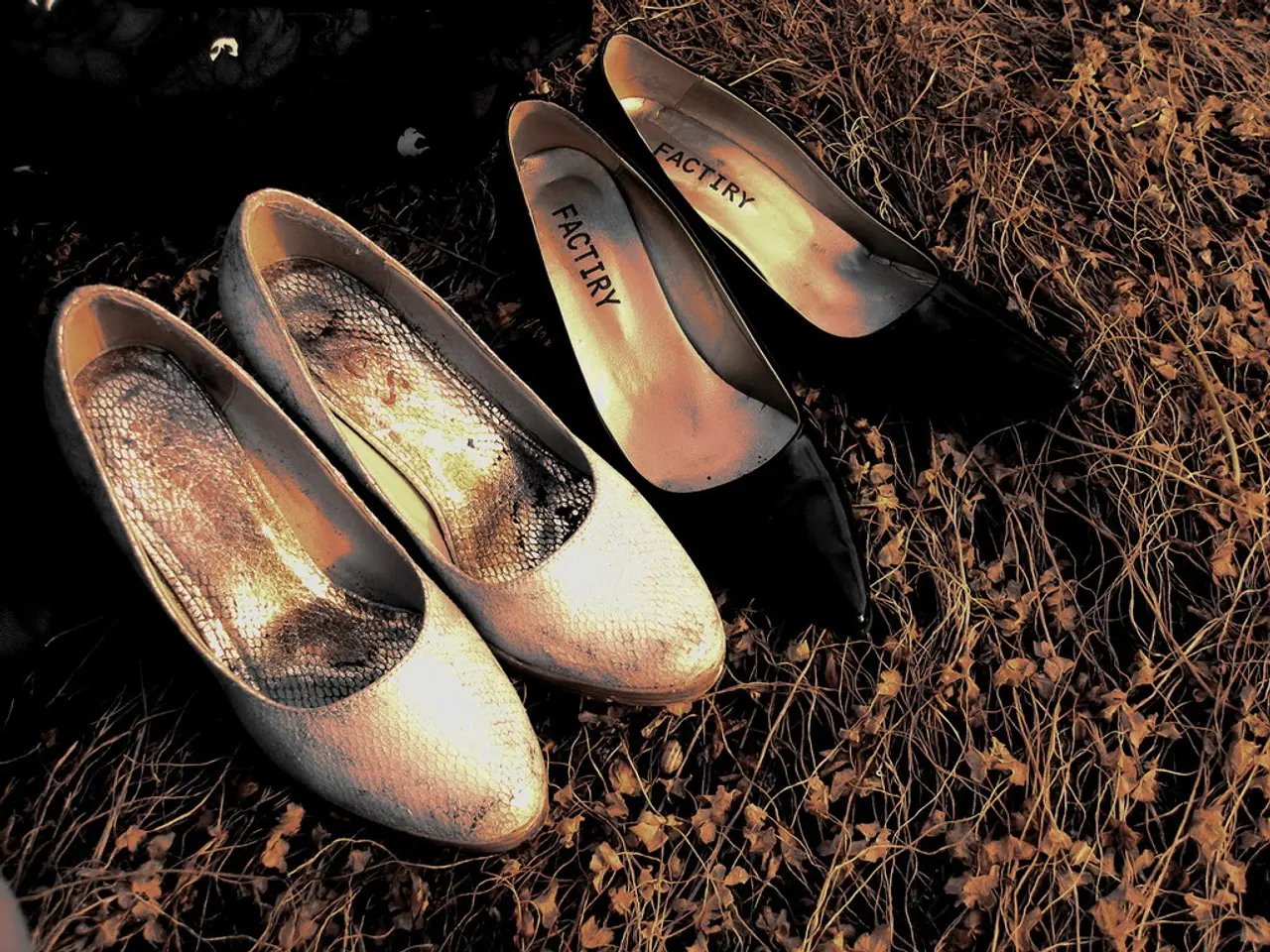Achilles Tendon Inflammation: Symptoms, Causes, and Remedies for Treatment
In the world of sports and physical activities, Achilles tendinitis is a common injury that can cause significant discomfort and hinder performance. This condition, characterised by pain and swelling in the Achilles tendon, can be managed effectively with a combination of exercises and preventive measures.
Prevention Strategies
To reduce the risk of developing Achilles tendinitis, it's essential to adopt a proactive approach. Warm-up before exercise with light cardio and stretching, particularly focusing on calf stretches to improve flexibility in the Achilles tendon. Gradually increase exercise intensity and volume to avoid overuse. Wearing shoes that fit well and provide adequate support, especially for activities involving running or jumping, is also crucial. Technique adjustment during sports activities can help avoid excessive strain on the tendon.
Treating Achilles Tendinitis
When Achilles tendinitis occurs, the primary goal is to relieve pain and reduce swelling. Rest and elevating the foot can aid in the healing process. Applying ice to the affected area can alleviate pain and inflammation.
Exercise plays a vital role in treating Achilles tendinitis. Eccentric calf raises, in which you slowly lower your heels from a step or ledge, can help strengthen the tendon and reduce pain. Calf raises on a flat surface can build strength in the muscles around the tendon.
Physical therapy can be beneficial in improving tendon strength and resilience. This may include exercises that lengthen the tendon under load. A physical therapist can teach stretching exercises to improve flexibility and increase calf strength.
Additional Tips
Managing pain with the RICE (Rest, Ice, Compression, and Elevation) method can help speed up recovery. Avoid activities that exacerbate the condition until symptoms improve. If foot mechanics are contributing to the condition, consider using orthotics.
For specific recommendations, consulting the American Academy of Orthopaedic Surgeons (AAOS) website or contacting a healthcare professional would be advisable.
In conclusion, by adopting preventive measures and following a structured exercise routine, it's possible to manage and even prevent Achilles tendinitis. Regular stretching, gradual progression, proper footwear, and good technique can help athletes and active individuals maintain their performance levels and stay injury-free.
- Adopting a proactive approach to prevent Achilles tendinitis is crucial, focusing on warm-ups with light cardio, calf stretches, and gradually increasing exercise intensity.
- Proper footwear, especially shoes that provide adequate support for running or jumping activities, plays a vital role in reducing the risk of developing this condition.
- Technique adjustment during sports activities can help avoid excessive strain on the Achilles tendon and prevent Achilles tendinitis.
- When Achilles tendinitis occurs, the primary goal is to relieve pain and reduce swelling through methods such as rest, elevating the foot, and applying ice.
- Eccentric calf raises can help strengthen the Achilles tendon and reduce pain associated with this condition.
- Calf raises on a flat surface can help build strength in the muscles around the tendon.
- Physical therapy can improve tendon strength and resilience, including exercises that lengthen the tendon under load.
- A physical therapist can teach stretching exercises to improve flexibility and increase calf strength.
- The RICE (Rest, Ice, Compression, and Elevation) method can help speed up recovery from Achilles tendinitis.
- Avoid activities that exacerbate the condition until symptoms improve when dealing with Achilles tendinitis.
- If foot mechanics are contributing to the condition, consider using orthotics as a means of support.
- Specific recommendations for managing Achilles tendinitis can be found on the American Academy of Orthopaedic Surgeons (AAOS) website.
- Consulting a healthcare professional would be advisable for specific recommendations regarding Achilles tendinitis.
- Mental health is equally important in maintaining overall health and wellness.
- Men's health, concerning medical conditions, chronic diseases, and skin care, should not be overlooked in favor of physical health.
- Fitness and exercise, combined with a balanced diet and appropriate nutrition, contribute to cardiovascular health, weight management, and increased longevity.
- In the realm of chronic diseases, managing chronic kidney disease, cancer, and other musculoskeletal disorders is essential to maintaining one's health.
- Sports and fitness activities are beneficial for mental health, promoting work-place wellness, and offering social connections.
- Therapies and treatments, ranging from manual therapy to medication, can help manage pain and other symptoms associated with various medical conditions and sports injuries.
- Aging gracefully involves maintaining fitness and exercise routines, eating a balanced diet, and ensuring overall health and wellness through proper nutrition and medical care.
- Sports, such as football (NFL, WNBA, baseball, hockey, golf, and tennis), auto-racing (Grand Prix, NASCAR), basketball (NBA, NCAA basketball, and European leagues), American football (NFL, College football), and mixed martial arts, provide entertainment and fitness opportunities, but it's also important to consider the impact of sports betting on overall health and wellness.




